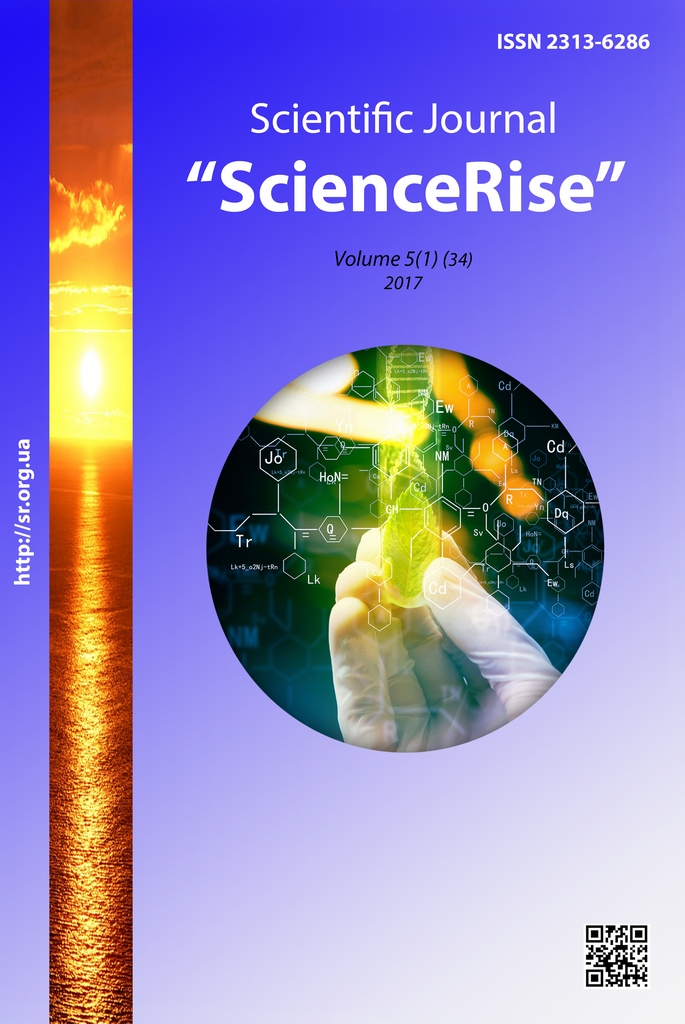Формирование у студентов мотивации к сбережению физического здоровья средствами создания педагогических условий воспитательного здоровьесберегающего пространства
DOI :
https://doi.org/10.15587/2313-8416.2017.101823Mots-clés :
физическое здоровье, студенческая молодежь, мотивация сохранения физического здоровья, педагогическое условие, колледжRésumé
Формирование мотивации студентов к сохранению физического здоровья имеет важное общественное значение, поскольку воспитание здорового поколения – задача, от решения которой во многом зависит развитие и потенциал государства. Осуществление этой деятельности обеспечивается формированием соответствующей мотивации. Обосновано, что формирование мотивации у студентов требует создания определенных педагогических условий: создание воспитательного здоровьесберегающего пространства
Références
The national strategy of improving motor activity in Ukraine for the period till 2025 "Motion activity – a healthy way of life – a healthy nation"(2016). Elektronnyi repozytarii LDUFK. Available at: http://repository.ldufk.edu.ua/handle/34606048/5549
On physical culture and sports (2009). Verkhovna Rada of Ukraine, No. 2562. Available at: http://dsmsu.gov.ua/index/ua/material/4255
Maslow, A. (1997). Psychology of life. Moscow: Vakler, 304.
Leontev, A. N. (1977). Activity. Consciousness. Personality. Moscow: Politizdat, 304.
Kovalev, V. I.; Bodalev, A. A. (Ed.) (1988). Motives and activities. Moscow: Nauka, 192.
Piloyan, R. A. (1984). Motivation sports activities. Moscow: Physical Culture and Sports, 104.
Balysheva, B. (Ed.) (1999). Educational Encyclopedia. Moscow: ISE, 672.
Petrovskogo, A. V., Yaroshevskogo, M. G. (Eds.) (1985). Short psychological dictionary. Moscow: Politizdat, 431.
Ilin, E. P. (2002). Motivation and motives. Saint Petersburg: Peter, 512.
Brizhatyi, O. V., Prokopova, L. I. (1999). Formation of motivation of sports and recreational activities of the person at different age stages of its development. Pedagogy, psychology and medical-biological problems of physical education and sport, 19, 13–18.
Vayner, E. N. (2016). Public and social aspects of health and healthy lifestyle Valeology. Vol. 8. Moscow: FLINT, 13–16.
Voskoboynikova, G. L. (2006). Valeologichesky education, culture, education, prospects of development. Native School, 6, 26–27.
Gasnikova, E. N. (2010). Organizational-methodical conditions of formation of the valuable relation to the reproductive health of adolescents in secondary school. Institute of Pedagogical Sciences of Ukraine education problems. Kyiv, 20.
Vakulenko, O. V. (2001). Healthy way of life as a social-pedagogical conditions of identity formation in adolescence. M. P. Dragomanova Nat. ped. Univ, Kyiv, 20.
Krutsevich, T. Yu. (2000). Priority motives of adolescents in physical education and sport. Hnatyuk Scientific notes Ternopil National Pedagogical University. Series: pedagogy, 7, 96–103.
Orzhekhovskaya, V. M. (1992). Getting students from narcotic habits. Kyiv: Scientific World, 281.
Ananev, V. A. (1998). Introduction to Health Psychology. Saint Petersburg: Baltic Pedagogical Academy, 148.
Prokofev, B. M. (1997). Philosophical Encyclopedic Dictionary. Moscow: TSB, 300.
Téléchargements
Publié-e
Numéro
Rubrique
Licence
(c) Tous droits réservés Irina Kobzievа, Nataliia Skinder, Daryna Stopnyk, Irina Torianik 2017

Cette œuvre est sous licence Creative Commons Attribution 4.0 International.
Our journal abides by the Creative Commons CC BY copyright rights and permissions for open access journals.
Authors, who are published in this journal, agree to the following conditions:
1. The authors reserve the right to authorship of the work and pass the first publication right of this work to the journal under the terms of a Creative Commons CC BY, which allows others to freely distribute the published research with the obligatory reference to the authors of the original work and the first publication of the work in this journal.
2. The authors have the right to conclude separate supplement agreements that relate to non-exclusive work distribution in the form in which it has been published by the journal (for example, to upload the work to the online storage of the journal or publish it as part of a monograph), provided that the reference to the first publication of the work in this journal is included.

